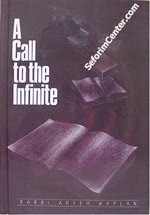|
The English word “prayer” derives from the Latin for “beg, entreat or request.” One would expect something similar in Hebrew, but tefillah literally means “to judge oneself.” Rabbi Shimshon Rafael Hirsch, father of Modern Orthodoxy, offers a compelling, if troubling, explanation.
Shimshon Rafael HirschThe word hith-palel (to pray) comes from the root palal, which in turn is related to the root balal…The root balal…denotes bringing a fresh element into a mass, incorporating this element into all parts of the mass, and thus forming a new material out of the mass. This is the Jewish concept of the judge’s task, [and it is for this reason that the verb palal means "to judge"]. The judge must bring justice and fairness, which are elements of Divine Truth, into the case. This must penetrate all elements of the dispute. Therefore, by bringing true justice into what was angry dissension, the judge transforms it into harmonious unity. When one does this to himself, he is said to hith-palel, that is, “to judge himself." Hith-palel means to take the element of God’s truth and make it penetrate all phases and conditions of our being and our lives. This allows our entire being to gain a degree of harmony in God. Jewish tefillah (prayer; a noun from the same root as hith-palel) is hence very different from what is usually conceived of as prayer. It is not an expression from within, or an expression of that with which the heart is already filled. Rather, it is a renewal and penetration of truth which comes from the outside. If our prayers were not tefillah … working on our inner selves to bring them to the heights of recognition of the truth and to resolutions for serving God, then there would be no sense in having fixed times and prescribed forms for them. But our prescribed prayers are not facts and truths of which we are already conscious; they are concepts which we wish to awaken and renew in ourselves. The less one may feel inclined to recite a prayer, the more necessary it may be to say it. Rabbi Shimshon Raphael Hirsch Commentary on Genesis 20:7 Rabbi Hirsch’s commentary is shocking, and no doubt troubling to many, in that it describes prayer as a movement from the outside in. It is not a pouring out of the heart, but an opening of the heart so that it may receive God’s presence. But Rabbi Hirsch likely had other writings on prayer, and I doubt he meant this to the contradiction of prayer from humans to God. Rather, he highlights one of the central dynamics of fruitful prayer. We pray not only, and for me not primarily, to change God, but to change ourselves. And while that task benefits from pouring our hearts out to God, it also requires listening, and being vulnerable, to what the tradition (through the Siddur) and God (in drawing us close through prayer) call us to be. Rabbi Mike Comins  Shimshon Raphael Hirsch (1808 – 1888) was a German rabbi best known as the father of the Torah im Derech Eretz school of contemporary Jewish thought and driving force behind modern, Orthodox Judaism. A Call to the Infinite by Rabbi Aryeh Kaplan New York/Jerusalem: Moznaim Publishing Corporation, 1986, p. 12
0 Comments
Leave a Reply. |
Welcome to the Making Prayer Real eJournal! Edited by Rabbi Mike Comins and sponsored
by the Making Prayer Real Curriculum, the eJournal offers wisdom, tools, and resources on the art of Jewish prayer. Explore the eJournal by clicking on the topics below. Please share these resources with your friends!
Categories
All
|
 RSS Feed
RSS Feed